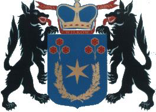When looking for the first historical mentions of the Namysłów region, one must reach beyond the Middle Ages. The earliest traces of settlement in the area, uncovered during the digs in Świerczów, date back to the Stone Age or, to be more precise, the Mesolithic Chojnice-Pieńki culture from around 5 th century BC. The archaeological digs in Woskowice Małe and Bierutów uncovered numerous artefacts from the Bronze Age; many of those artefacts are displayed in the Regional Chamber in Namysłów. In later centuries, the earlier settlement cultures were replaced by the Przeworsk culture which dominated in the area between 3 rd and 5 th century BC and was characterised by strong Roman influence. It should also be mentioned that Namysłów is located on the historic Amber Road, one of the key ancient trade routes. The national road no. 39 follows the route of the Amber Road.
Middle Ages
In the Medieval times, the area of what is currently the district of Namysłów was located within the territory of Poland which was under the rule of Mieszko I. It is from that period that the traces of settlement uncovered in the Old Town in Namysłów originate. The establishment in the year 1000 of the diocese in Wroclaw, to which the area of Namysłów belonged, was a crucial event in the development of those lands.
The first mention of the town itself originates from 1233. The rapid growth of towns and rural areas in the 13th century was driven mainly by the influx of German settlers which also altered the ethnic composition of the area. The towns at the time were founded according to the principle under which a town with a market had to be located no further than 15 km from all villages, so as to make it possible for the peasants to make it to the town and back in one day. The distance between towns could be longer, i.e. up to 30 km, so that they could be conveniently reached on horseback. During that period, Namysłów rose to the position of an important economic hub.
You can read more on the history of Namysłów in the book which was recently published by the Poviat Starosty in Namysłów.
The 14th century was a more tumultuous period for the town which suffered from the war between Poland and Bohemia which began by King John of Bohemia’s invasion on the Duchy of Świdnica. Under the peace treaty of Namysłów of 1348, the area was taken over by Bohemia and remained part of the Kingdom of Bohemia for the next four centuries. Namysłów was granted the royal town status which provided a considerable growth boost for the town. Fearing Poland’s attempts to reclaim Silesia, the Bohemian king build massive walls around the town, greatly improving its defensive capabilities. The walls allowed Namysłów to withstand the attack of the Hussites during the religious wars of the 15th century.
Namysłów land under the rule of Bohemian kings, Habsburgs of Austria and the Kingdom of Prussia
The last Bohemian king who ruled the Namysłów lands was Louis of Hungary who died fighting the Turks in the Battle of Mohács. As a result of his death, the Bohemian nobility elected the Austrian Archduke Ferdinand I Habsburg, who would later become the King and Emperor of Germany, to the throne of Bohemia, thus giving the rule of the country to Catholic Habsburg dynasty. Despite Catholicism being the official religion in Silesia, the Reformation movement started by Martin Luther spread quickly across the region. In the second half of the 16th century, only three priests remained in the lands subordinated to the Bishop of Wroclaw.
The situation turned after the Thirty Years’ War which took a heavy toll on the area. Many important buildings were destroyed, others were stripped of their original function. The Peace of Westphalia, signed in 1648 and ending the Thirty Years’ War, coincided with the beginning of the Counter-Reformation which also reached Namysłów. The churches were reclaimed by Catholics, and Franciscan monks arrived to convert the local population to Roman Catholicism. The Habsburg dynasty worked to centralise their power and introduce absolute monarchy. As a result, their subjects turned against them and offered little resistance to the Prussian invasion which allowed King Frederick the Great to seize Silesia. Many battles were fought and eventually those lands were taken from Austria and incorporated into Prussia and later Germany.
After 1741, the traditional feudalistic administrative division was abolished and replaced by districts, including the district of Namysłów. The King of Prussia also granted religious freedom to his subjects – the Catholics were allowed to keep their temples, but the monasteries were taxed. The Protestants were allowed to build their own churches. In schools, German became the official language which resulted in the gradual elimination of Polish among the local population (despite those obstacles, the districts of Namysłów and Syców were the only ones in Lower Silesia where Polish survived until the beginning of the 20th century). In Namysłów, the town walls were razed to allow for economic expansion of the town. Paved roads were built and a railway connection was opened. Some towns, such as Świerczów, fell into ruin. Others, after initial setbacks, bounced back with renewed energy. One example is the town of Pokój which became a renowned tourist destination.
World Wars
After the end of World War I, the western part of the region remained under the German rule, while in the eastern part, a plebiscite was organised to determine the future of the region. As a result of the plebiscite, the north-eastern part of the district was incorporated into Poland and the rest of the land remained part of Germany.
Namysłów was away from the main theatre of World War II. Attempts were made to establish a local unit of the Home Army, but the conspiracy was quickly uncovered by the Germans. In late January 1945, the town underwent mandatory evacuation as the Soviet troops advanced on Namysłów. The German forces were defeated on 21 January in the Battle of Smarchowice Śląskie. On the same day, the Soviet army captured Namysłów and most of the district.
Under the accords and treaties of Yalta and Potsdam, the local German population was displaced, and repatriates from the Eastern Borderlands (Polish: Kresy Wschodnie) and migrants from central Poland were brought to live there. The Namysłów land was incorporated into Poland.

 Powiat
Powiat Gmina
Gmina Gmina
Gmina Gmina
Gmina